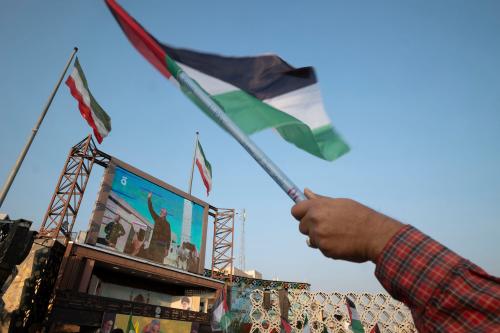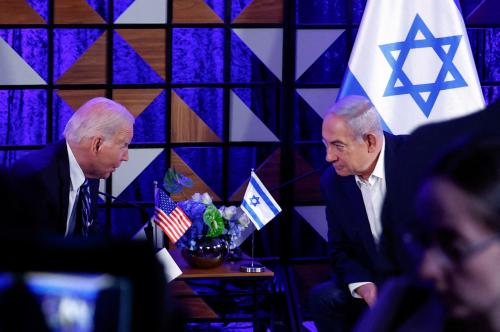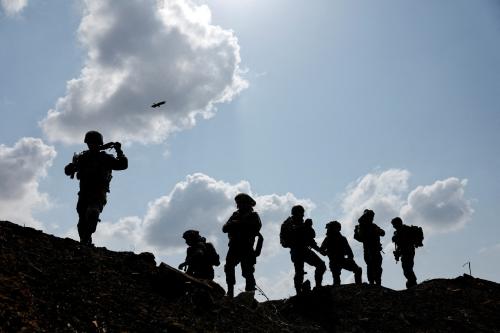As the cries of “Je suis Charlie” subside, two facts about the terrorist attacks in Paris stand out. First, every aspect of the response to the violence at the satirical magazine and the Hyper Cacher market has been outsized and extraordinary: the 3.7 million people who turned out to march against the violence, the unprecedented deployment of 10,000 French troops to secure Jewish institutions and even the 3 million-copy run of the latest edition of Charlie Hebdo. On the other hand, as the details of the attack have emerged, it has become clear that this kind of violence represents the new normal in jihadist terrorism.
Whether we look at the recent incidents in Paris, Ottawa or Sydney, there are clear similarities. Low-tech assaults and hostage-takings, these operations are carried out by local militants with little direct involvement from a major jihadist organization. Despite al Qaeda in the Arabian Peninsula’s claiming responsibility for the Charlie Hebdo killings, the group’s role appears confined to drawing the bullseye on the magazine in its online publication Inspire, and perhaps giving the Kouachi brothers some training and money several years ago. These incidents have not involved spectacular suicide bombings or complex assaults on massive targets like Heathrow Airport or Wall Street. They have all claimed comparatively low numbers of casualties.
Dealing with the problem of self-starter, low-end terror will challenge Western governments and publics for several reasons: intractable conflicts outside the borders of the affected countries that are motivating extremists, the socio-economic problems that are the backdrop for this militancy, the difficulty of identifying potential attackers and low public tolerance for violence.
The spike in the frequency of attacks has been driven in part by the excitement of radical Islamists in the wake of ISIL’s successes in capturing and holding territory in Iraq and Syria and the group’s effort to create an independent caliphate. After almost a decade and a half of setbacks to al Qaeda, ISIL’s capture of Mosul and control of territory from outside Aleppo to Ramadi has provided extremists with a powerful sense that history is turning their way.
The perpetrators themselves have overwhelmingly not been returned foreign fighters. They have been extremists who want to be part of the action, but at home. The recent shootout in Verviers in Belgium, in which returnees from Syria are said to have been involved, may indicate that the foreign fighter challenge is nearer than many had previously thought. But right now, the greater threat comes from those who seek to piggyback on the ISIL phenomenon but haven’t been recruited by the group.
Even before ISIL captured extremists’ attention, the new trend in terrorism was becoming clear, though attacks were less frequent. Early cases included the 2009 Ft. Hood shooting by Maj. Nidal Hassan, which killed 13, the 2012 shootings of seven in Toulouse and Montauban in France by a radicalized petty criminal and the stabbing of British soldier Lee Rigby in 2013 by a group of extremists. The Tsarnayev brothers who carried out the attack on the Boston Marathon belong in this group as well, since they operated without sustained outside guidance and used the crudest bombs imaginable.
Though no one can be pleased that these attacks have occurred, the fact that deaths per incident have come down so dramatically from the days of the Madrid and London attacks—not to mention 9/11—ought to be recognized as a major success in counterterrorism. That’s not to say that terrorists have given up attempting major attacks—al Qaeda in Yemen remains focused on an undetectable bomb to stash aboard an airliner. The United States cannot let its guard down.
The task that intelligence and law enforcement faces in finding these individuals is difficult, especially because the lack of organizational affiliation means they leave fewer traces. So what is to be done? Even the best policy prescriptions bring real challenges.
Task number one is to take ISIL down a few pegs to persuade extremists that their global moment has not arrived. President Barack Obama has been right to avoid the trap of deeper intervention, which would lead to more radicalization. So airstrikes, coalition operations and training for Iraqi forces must be continued and stepped up. All this will take time and more energy than is currently being devoted to the task. The current pace at which the Iraqis, Peshmerga and moderate opposition are developing will not produce the kind of counterbalancing force that can deliver a punishing blow to the jihadists.
Europeans must spend considerably more money and effort on the threat posed by disaffected Muslims in their countries. Though they have stepped up their activity since the Madrid and London attacks in the last decade, the allocation of resources to intelligence collection and law enforcement is still well short of where it should be, as the litany of errors in surveillance of the Kouachis demonstrates.
In a time of austerity, this won’t be easy. But as the Europeans build their capabilities and bring more to the trans-Atlantic intelligence exchange, they will establish relationships with the American intelligence collectors—the NSA above all—who have mostly come in for disparagement in the era of Edward Snowden. That increase in law enforcement and intelligence work will need to be done carefully to avoid provoking greater resentment and radicalization—always a tough needle to thread. The long, slow work of engagement by police and civil authorities to build partnerships with communities and identify extremists early will be essential.
Europeans, as has been widely observed, will also need to do better at integrating their Muslim populations and, more broadly, beat back rising Islamophobia. True, there have been gains, as the Arabic name of one of the slain police officers shows. And the remarkable acknowledgment this week by French Prime Minister Manuel Valls that “geographic, social, ethnic apartheid” exists in France also gives a glimmer of hope. But it comes against an historic backdrop of halting, insufficient action owing to ingrained prejudice, the strong anti-immigration dynamic that is shaping politics from Britain’s UK Independence Party to France’s National Front and Germany’s Patriotic Europeans Against the Islamization of the West (PEGIDA).
Europeans have long argued that American-style efforts to promote diversity in the workplace are contrary to their laws, but that argument suggests a lack of imagination. Job-creation spending to pierce the stagnant gloom of Paris’ banlieues is essential. Moreover, the notion that a real campaign against anti-Muslim sentiment is in the works is belied by strong and unreflective support for Charlie Hebdo and its offensive cartoons.
The United States has many advantages over Europe when it comes to protecting itself against homegrown extremism, including a much wealthier, better-educated, widely distributed set of Muslim communities. But the threat of the determined self-starter, like Christopher Lee Cornell, the Ohio-based ISIL sympathizer who was planning to attack the U.S. Capitol until he was arrested last week, will be with us for some time too.
What Europe and the Unites States—where the Paris killings have dominated the news and exacerbated the feeling of an imminent major terrorist threat, rapidly—need above all is a change in attitude, a greater resilience, in the face of this threat. None of our societies has fully absorbed the notion that this kind of terrorist violence is an endemic characteristic of our times.
The high-end threat along the lines of 9/11 has been much diminished by U.S. counterterrorism efforts. But there is no foolproof defense against the Ft. Hood shooters, Boston Marathon-type amateurs and Kouachis. They are as much a part of life today as the killers of Newtown and Columbine. We need to stop them as best we can, but we can neither let them dominate our lives nor make us believe that they threaten our societies. That message, more than any other, is the one that world leaders need to impress upon to the sea of marchers in Paris and the hundreds of millions more around the West around who watched them.
This piece was originally published by Politico Magazine.



Commentary
Op-edA New Kind of Terrorist
January 22, 2015